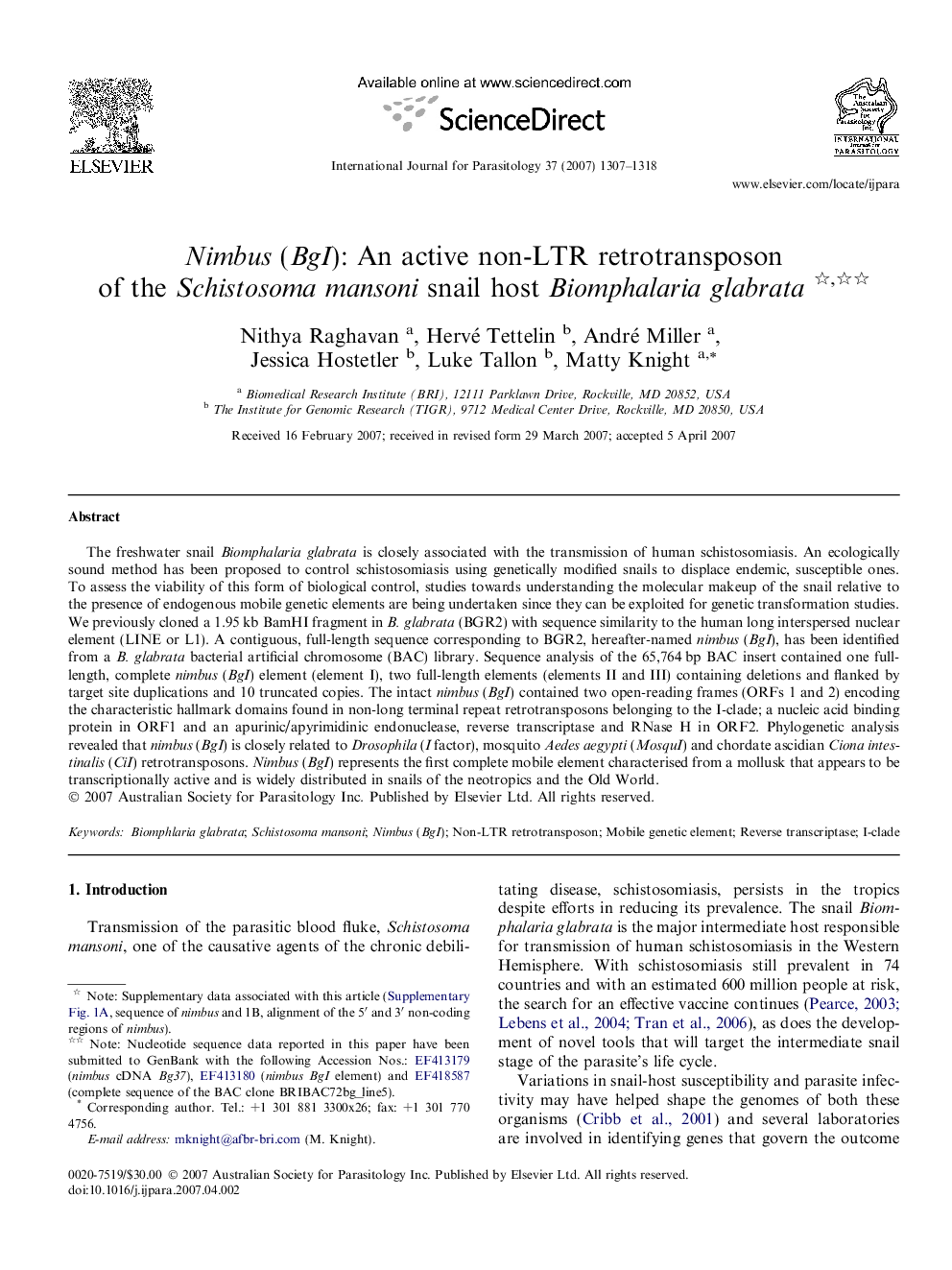| Article ID | Journal | Published Year | Pages | File Type |
|---|---|---|---|---|
| 10972759 | International Journal for Parasitology | 2007 | 12 Pages |
Abstract
The freshwater snail Biomphalaria glabrata is closely associated with the transmission of human schistosomiasis. An ecologically sound method has been proposed to control schistosomiasis using genetically modified snails to displace endemic, susceptible ones. To assess the viability of this form of biological control, studies towards understanding the molecular makeup of the snail relative to the presence of endogenous mobile genetic elements are being undertaken since they can be exploited for genetic transformation studies. We previously cloned a 1.95Â kb BamHI fragment in B. glabrata (BGR2) with sequence similarity to the human long interspersed nuclear element (LINE or L1). A contiguous, full-length sequence corresponding to BGR2, hereafter-named nimbus (BgI), has been identified from a B. glabrata bacterial artificial chromosome (BAC) library. Sequence analysis of the 65,764Â bp BAC insert contained one full-length, complete nimbus (BgI) element (element I), two full-length elements (elements II and III) containing deletions and flanked by target site duplications and 10 truncated copies. The intact nimbus (BgI) contained two open-reading frames (ORFs 1 and 2) encoding the characteristic hallmark domains found in non-long terminal repeat retrotransposons belonging to the I-clade; a nucleic acid binding protein in ORF1 and an apurinic/apyrimidinic endonuclease, reverse transcriptase and RNase H in ORF2. Phylogenetic analysis revealed that nimbus (BgI) is closely related to Drosophila (I factor), mosquito Aedes aegypti (MosquI) and chordate ascidian Ciona intestinalis (CiI) retrotransposons. Nimbus (BgI) represents the first complete mobile element characterised from a mollusk that appears to be transcriptionally active and is widely distributed in snails of the neotropics and the Old World.
Related Topics
Life Sciences
Immunology and Microbiology
Parasitology
Authors
Nithya Raghavan, Hervé Tettelin, André Miller, Jessica Hostetler, Luke Tallon, Matty Knight,
